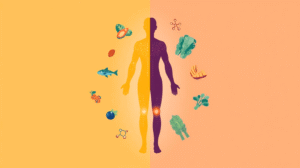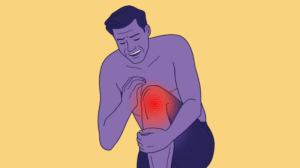Joint pain is a common issue, which targets millions of individuals around the world. It may complicate routine tasks and reduce the overall quality of life significantly. Joint pain may cause many diseases, including autoimmune diseases, gout, and rheumatoid arthritis. Others are injuries, overuse, poor posture and natural wear and tear due to aging. Normal tasks such as walking, bending, or lifting can be difficult because of symptoms such as stiffness, swelling, lack of flexibility, or acute pains during movement.
Medical interventions such as painkillers, anti-inflammatory medication, physical therapy, and vaccines are not always sufficient. Studies indicate that lifestyle choices, particularly regular low-impact activity, are essential in sustaining long-term joint health.
The best part is that you do not have to exercise intensively or heavily in order to feel better. In fact, pain can aggravate joint stress or inflammation in case it is neglected. Rather, the health of people is likely to improve with light activities. Stretching under control enhances your motion. Exercises that help to increase blood circulation and lubricate your joints involve swimming, cycling, and walking, which are low-impact exercises. Muscle-strengthening exercises are good for strengthening the muscles and protecting and supporting joints.
Exercise is a great way to improve pain.
This article explains the most prevalent causes of joint pain and the use of exercises to achieve continuous relief. A detailed list of easy, painless exercises and stretches that are safe for joints are covered in the blog. These practical tips will make you move more comfortably; you will be less stiff and feel confident in your movements.
Understanding Joint Pain
a. Types of Joint Pain
1. Osteoarthritis (OA)
Degenerative joint disease characterized by the breakdown of cartilage, leading to pain and stiffness.
2. Rheumatoid Arthritis (RA)
An autoimmune disorder causing inflammation in the joints, often affecting the hands and feet.
3. Bursitis
Inflammation of the fluid-filled sacs (bursae) that cushion the joints.
4. Tendinitis
Inflammation or irritation of a tendon, commonly due to repetitive motion.
b. Acute vs. Chronic Pain
- Acute Pain: Sudden onset, often due to injury or overuse.
- Chronic Pain: Persistent pain lasting beyond the expected healing time, often associated with underlying conditions like arthritis.
Understanding the type and cause of joint pain is crucial for selecting appropriate exercises and treatments.
Benefits of Joint Pain Relief Exercises
Engaging in regular joint-focused exercises offers numerous advantages:
1. Improved Mobility and Flexibility
Regular movement helps maintain and enhance the range of motion in the joints [2].
2. Strengthening Surrounding Muscles
Building muscle strength provides better support to the joints, reducing strain.
3. Reduced Stiffness and Discomfort
Consistent activity can alleviate feelings of tightness and pain.
4. Enhanced Balance and Stability
Exercises that focus on balance can prevent falls and improve coordination.
5. Long-Term Joint Health
Regular movement promotes joint lubrication and cartilage health.
Incorporating these exercises into daily routines can lead to significant improvements in joint function and overall quality of life.
Principles of Safe Joint Exercise
To maximize benefits and minimize risks:
- Opt for Low-Impact Activities: Exercises like swimming, cycling, and walking reduce stress on the joints.
- Progress Gradually: Increase intensity and duration slowly to avoid overloading the joints.
- Prioritize Warm-Up and Cool-Down: Preparing muscles before and after exercise helps prevent injuries.
- Maintain Proper Form: Correct posture and technique are essential to avoid unnecessary strain [3].
- Listen to Your Body: Avoid exercises that cause sharp or persistent pain; modify movements as needed.
Adhering to these principles ensures a safe and effective exercise regimen.
Effective Joint Pain Relief Exercises
1. Knee Joint Exercises
- Quadriceps Strengthening: Exercises like straight leg raises and mini squats help build strength in the quadriceps, supporting the knee joint.
- Hamstring Stretches: Gentle stretches targeting the hamstrings can alleviate tension and improve flexibility [4].
- Low-Impact Cardio: Activities such as stationary biking and swimming provide cardiovascular benefits without stressing the knees.
2. Hip Joint Exercises
- Hip Bridges and Clamshells: These exercises strengthen the glutes and hip abductors, promoting hip stability
- Hip Flexor Stretches: Stretching the hip flexors can reduce tightness and improve range of motion.
- Leg Lifts and Resistance Band Work: Targeted movements enhance muscle strength around the hip joint.
3. Shoulder and Upper Body Exercises
- Shoulder Rotations and Wall Slides: These movements improve shoulder mobility and posture.
- Resistance Band Rows: Strengthen the upper back and shoulders, supporting joint health [5].
- Arm Circles and Scapular Drills: Enhance flexibility and stability in the shoulder region.
4. Wrist, Elbow, and Hand Exercises
- Wrist Flexor and Extensor Stretches: Help maintain flexibility and reduce stiffness.
- Grip-Strengthening Exercises: Tools like stress balls or therapy putty can improve hand strength.
- Forearm Rotations: Promote mobility and alleviate tension in the forearms.
5. Full-Body Low-Impact Exercises
- Yoga Poses: Poses like Cat-Cow and Child’s Pose enhance flexibility and joint health.
- Pilates Movements: Focus on core strength and stability, supporting overall joint function [6].
- Aquatic Exercises: Water-based activities reduce joint stress while providing resistance training.

Incorporating these exercises into a routine can provide comprehensive joint support.
Incorporating Joint Exercises into Daily Routine
- Frequency and Duration: Aim for at least 150 minutes of moderate-intensity exercise per week, spread throughout the week.
- Balanced Approach: Combine strengthening, stretching, and mobility exercises for optimal joint health.
- Integration with Therapy: Coordinate exercises with physical therapy or rehabilitation programs for enhanced recovery.
- Monitor Progress: Keep track of comfort levels and adjust routines as needed.
Consistency is key to achieving and maintaining joint health.
Common Mistakes in Joint Pain Exercises
- Ignoring Pain Signals: Pushing through pain can exacerbate joint issues.
- Skipping Warm-Up and Cool-Down: Neglecting these can lead to muscle strain and injury.
- Over-Reliance on Machines: Functional movements are essential for real-life joint support.
- Inconsistent Practice: Irregular exercise can hinder progress and joint health.
Avoiding these pitfalls ensures a safe and effective exercise regimen.
Additional Tips for Joint Health
- Weight Management: Maintaining a healthy weight reduces stress on weight-bearing joints [7].
- Anti-Inflammatory Nutrition: Incorporate foods rich in omega-3 fatty acids and antioxidants to combat inflammation.
- Supportive Gear: Use braces or compression sleeves as recommended to provide joint support.
- Regular Rest and Recovery: Allowing time for rest helps prevent overuse injuries and promotes healing.
Implementing these strategies can further enhance joint health and comfort.
Conclusion
Certain exercises on a regular basis can provide people with a significant amount of relief and improve their functioning of joints. One should exercise carefully, make their safety a priority, and seek medical assistance when necessary. Through these routines, you will be able to live a better life and improve mobility.
To learn more about pain relief exercises, have a look at these:
Frequently Asked Questions:
1. What are the best exercises to relieve knee pain?
Low-impact activities such as cycling, swimming, and specific strengthening exercises like straight leg raises can alleviate knee pain.
2. How can I improve hip mobility to reduce joint pain?
Incorporating hip flexor stretches, leg lifts, and resistance band exercises can enhance hip mobility and reduce pain.
3. Are low-impact exercises effective for shoulder pain?
Yes, exercises like shoulder rotations, wall slides, and resistance band rows can improve shoulder mobility and alleviate pain.
4. How often should I do joint pain relief exercises?
Aim for at least 150 minutes of moderate-intensity exercise per week, incorporating joint-specific exercises several times a week.
5. Can stretching alone help reduce joint stiffness?
While stretching is beneficial, combining it with strengthening and mobility exercises provides comprehensive joint support.
References
- Fusco, M., Skaper, S. D., Coaccioli, S., Varrassi, G., & Paladini, A. (2017). Degenerative joint diseases and neuroinflammation. Pain Practice, 17(4), 522-532. https://doi.org/10.1111/papr.12551
- Michlovitz, S. L., Harris, B. A., & Watkins, M. P. (2004). Therapy interventions for improving joint range of motion: a systematic review. Journal of Hand Therapy, 17(2), 118-131. https://doi.org/10.1197/j.jht.2004.02.002
- Hrysomallis, C. O. N., & Goodman, C. (2001). A review of resistance exercise and posture realignment. The Journal of Strength & Conditioning Research, 15(3), 385-390. https://journals.lww.com/nsca-jscr/abstract/2001/08000/a_review_of_resistance_exercise_and_posture.22.aspx
- Cayco, C. S., Labro, A. V., & Gorgon, E. J. R. (2019). Hold-relax and contract-relax stretching for hamstrings flexibility: a systematic review with meta-analysis. Physical Therapy in Sport, 35, 42-55. https://doi.org/10.1016/j.ptsp.2018.11.001
- Oranchuk, D. J., Ecsedy, E. N., & Robinson, T. L. (2021). Effects of a sport-specific upper-body resistance-band training program on overhead throwing velocity and glenohumeral joint range of motion. The Journal of Strength & Conditioning Research, 35(11), 3097-3103. DOI: 10.1519/JSC.0000000000003303
- Lee, K. (2021). The relationship of trunk muscle activation and core stability: a biomechanical analysis of pilates-based stabilization exercise. International journal of environmental research and public health, 18(23), 12804. https://doi.org/10.3390/ijerph182312804
- Powers, C. M., Ho, K. Y., Chen, Y. J., Souza, R. B., & Farrokhi, S. (2014). Patellofemoral joint stress during weight-bearing and non—weight-bearing quadriceps exercises. journal of orthopaedic & sports physical therapy, 44(5), 320-327. https://www.jospt.org/doi/10.2519/jospt.2014.4936



















